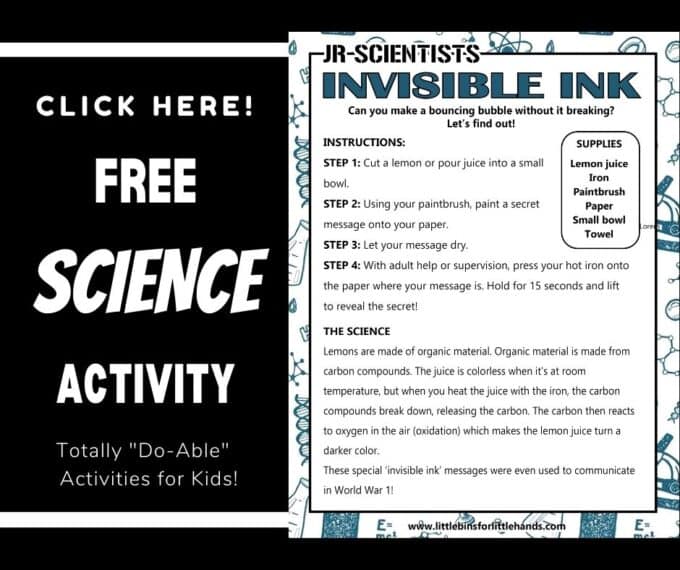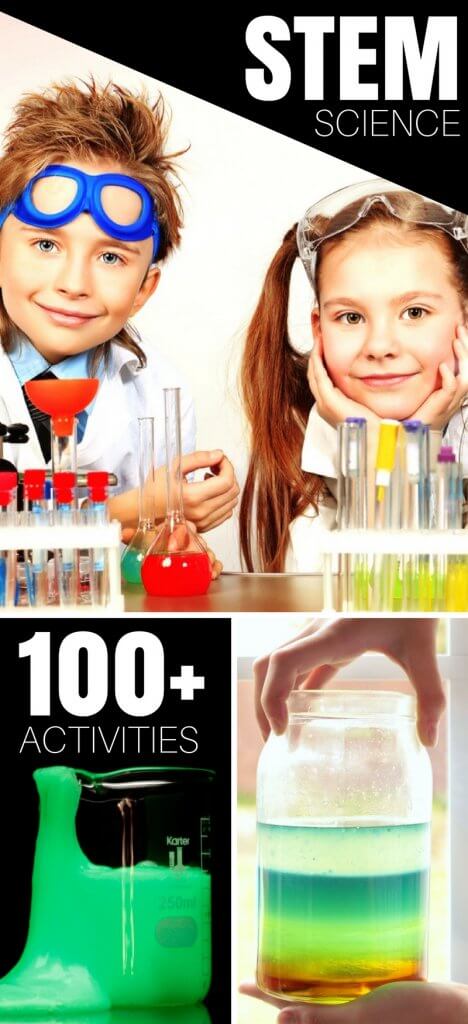Want to write a message that no one else can see until the ink is revealed? Find out how to make your own invisible ink! Simple chemistry that’s perfect to do at home or in the classroom. Create a secret message with our fun printable project below.
SECRET WRITING WITH YOUR OWN INVISIBLE INK

INVISIBLE INK
The use of invisible ink goes back more than 2000 years and was first used by the Ancient Greeks and Romans. In more recent times, invisible ink was an important tool for spies during World War I and World War II. They would go to elaborate means to hide their invisible ink as well as the means for revealing the secret messages.
There are different types of invisible ink that have been used over the years. Did you know the government even use to keep their recipes for invisible ink a top secret? Common invisible inks include lemon juice (see below), apple juice, onion juice, wine or vinegar, milk, cola, and even bodily fluids.
These are organic invisible inks that can be revealed through heat, from an iron, or light bulb. The organic ink changes the fibers of the paper so that the secret writing burns at a lower temperature and turns brown faster than the surrounding paper when exposed to heat.
Other types of invisible ink are called sympathetic inks. These inks contain one or more chemicals and require the application of a specific “reagent” to reveal the message. A good example of this type of invisible ink is our cranberry secret messages.
What is the best invisible ink? Lemon juice has to be one of the most accessible invisible inks to use. Read on how to create your own secret messages with invisible ink.
Also check out how to send secret messages with Morse Code.
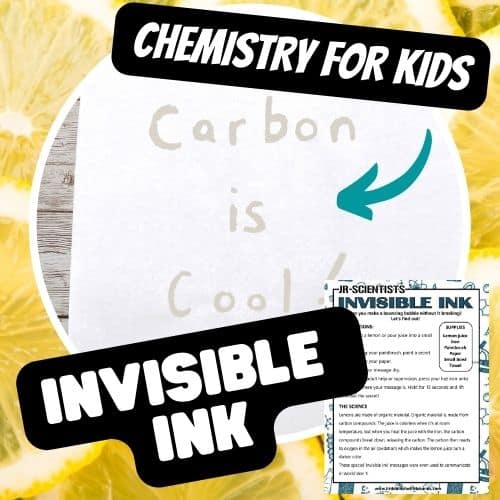
USING THE SCIENTIFIC METHOD
The scientific method is a process or method of research. A problem is identified, information about the problem is gathered, a hypothesis or question is formulated from the information, and the hypothesis is put to test with an experiment to prove or disprove its validity. Sounds heavy…
What in the world does that mean?!? The scientific method should simply be used as a guide to help lead the process.
You don’t need to try and solve the world’s biggest science questions! The scientific method is all about studying and learning things right around you.
As kids develop practices that involve creating, gathering data evaluating, analyzing, and communicating, they can apply these critical thinking skills to any situation. To learn more about the scientific method and how to use it, click here.
Even though the scientific method feels like it is just for big kids…
This method can be used with kids of all ages! Have a casual conversation with younger kiddos or do a more formal notebook entry with older kiddos!
Click here to get your printable invisible ink project!
HOW TO MAKE INVISIBLE INK
Leftover lemons? Try this apple oxidation experiment, a lemon volcano, lemon battery or even make fizzy lemonade for kitchen science!
Watch the video:
SUPPLIES:
- Lemon juice
- Iron
- Paintbrush
- Paper
- Small bowl
- Towel
INSTRUCTIONS:
STEP 1: Cut a lemon or pour juice into a small bowl.
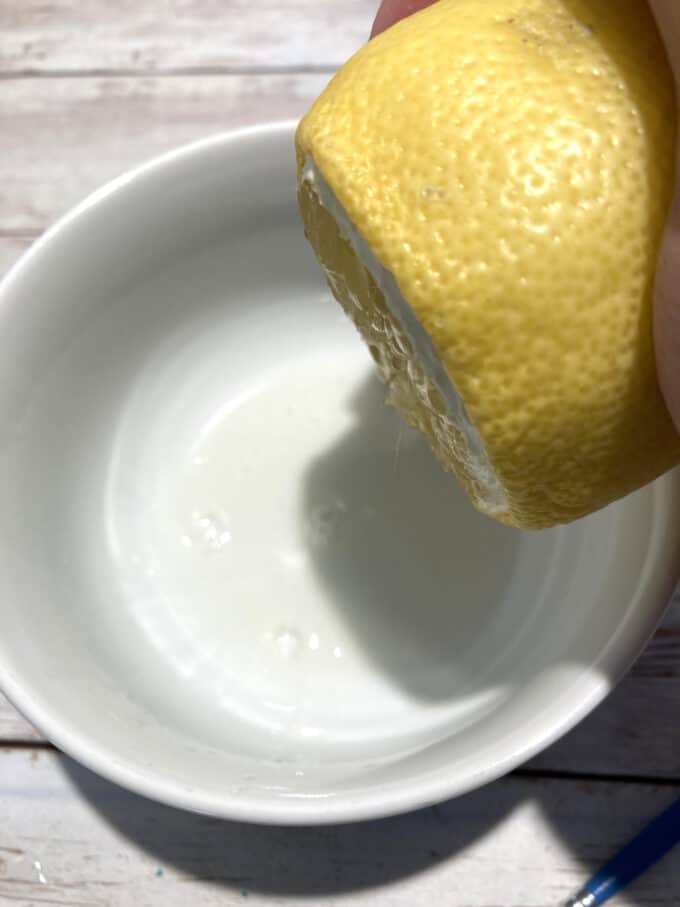
STEP 2: Using your paintbrush, paint a secret message with the lemon juice onto your paper.

STEP 3: Let your message dry.
STEP 4: With adult help or supervision, press your hot iron onto the paper where your message is.
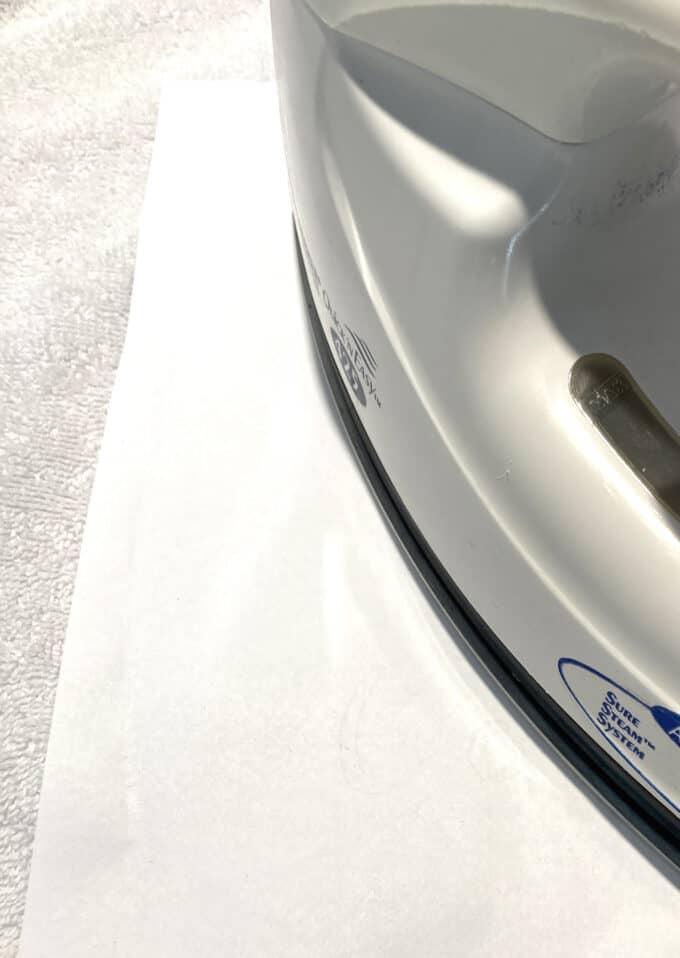
Hold for 15 seconds and lift to reveal the secret message!
Love solving codes? Also check out our secret decoder ring activity.
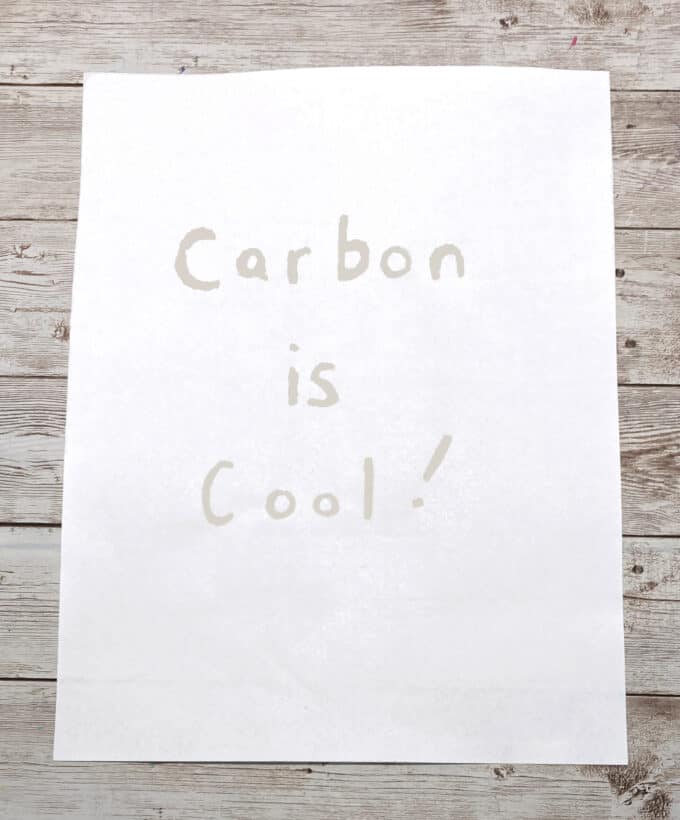
HOW DOES INVISIBLE INK WORK
Lemons are made of organic material, and organic material is made from carbon compounds. The carbon in the lemon juice is colorless when it’s at room temperature, but when you heat the juice with the iron, the carbon compounds break down, releasing the carbon.
The carbon then reacts with oxygen in the air (oxidation) which makes the lemon juice turn a
darker color, and the message visible.
Click here for more easy STEM Activities and Science Experiments with paper
FUN INVISIBLE INK CHEMISTRY FOR KIDS
Click on the image below or on the link for more kids science experiments.


